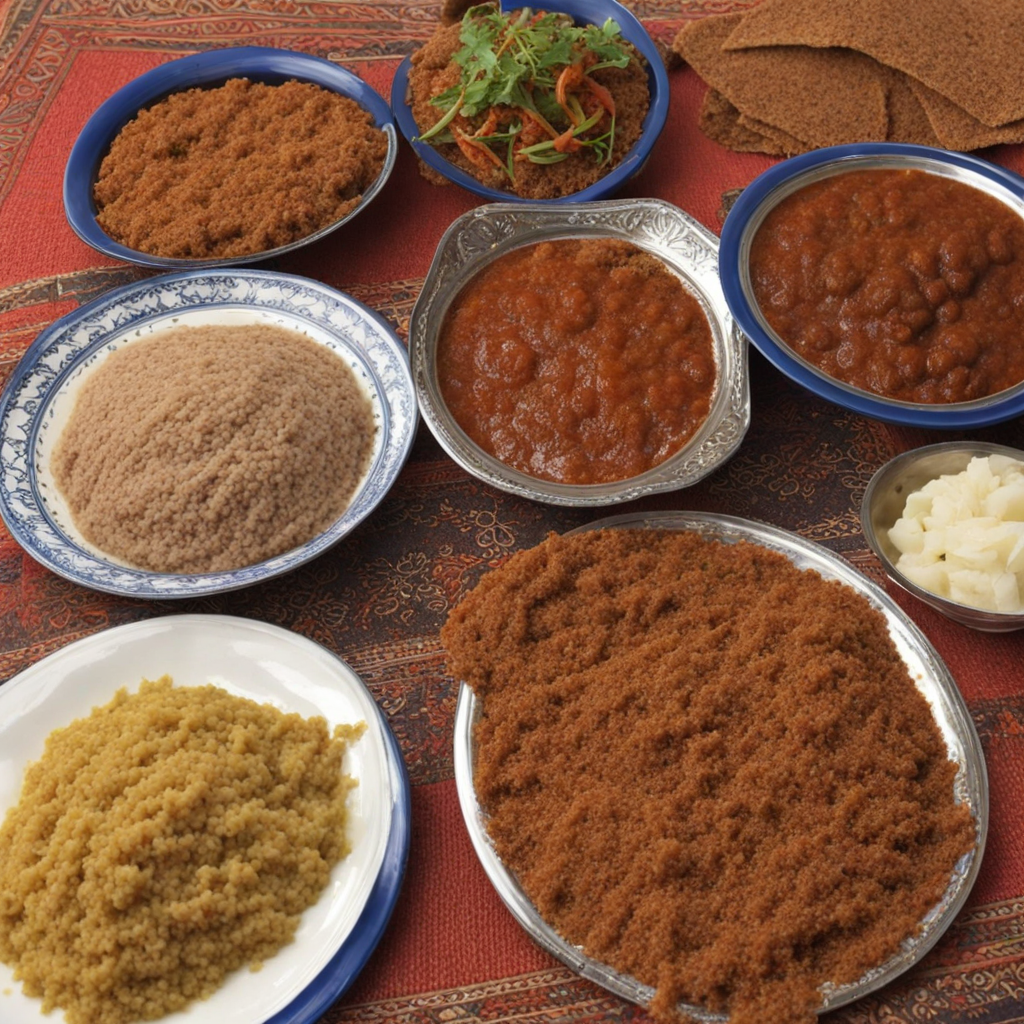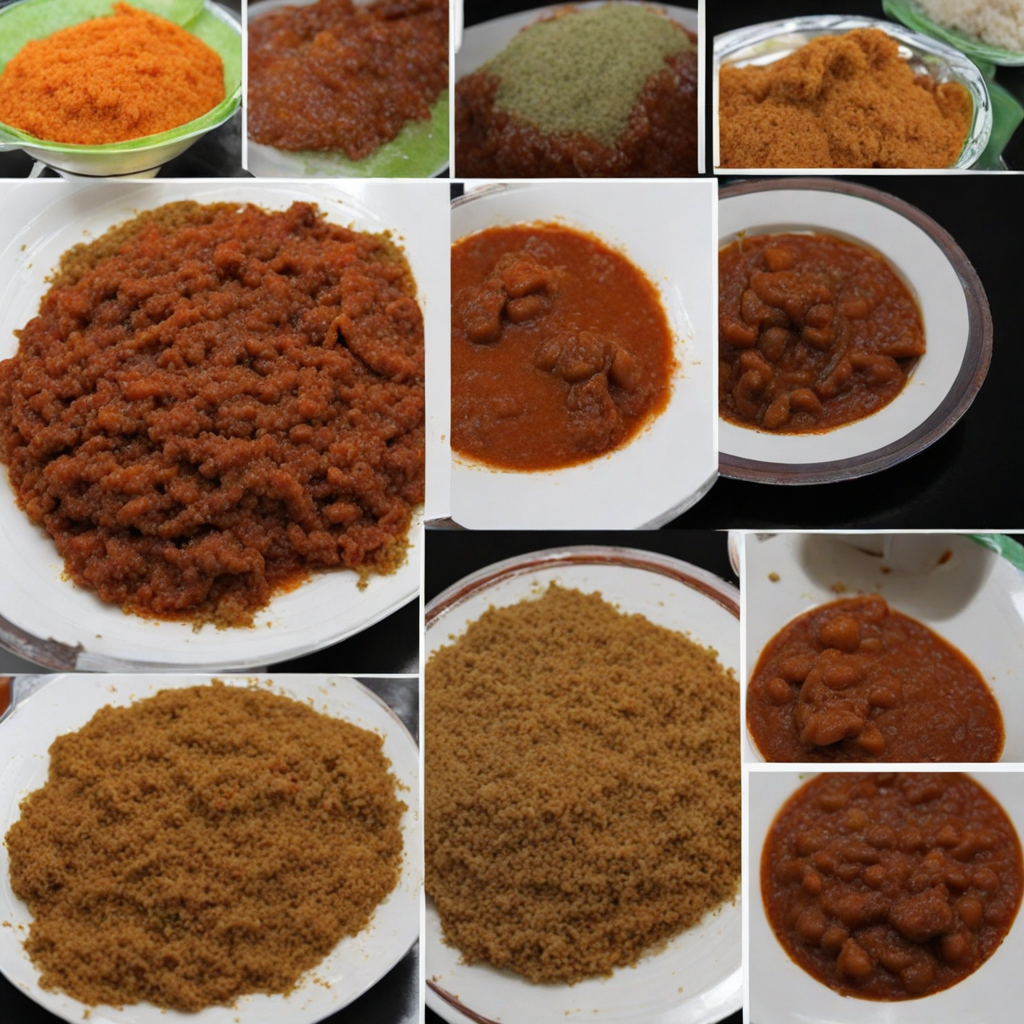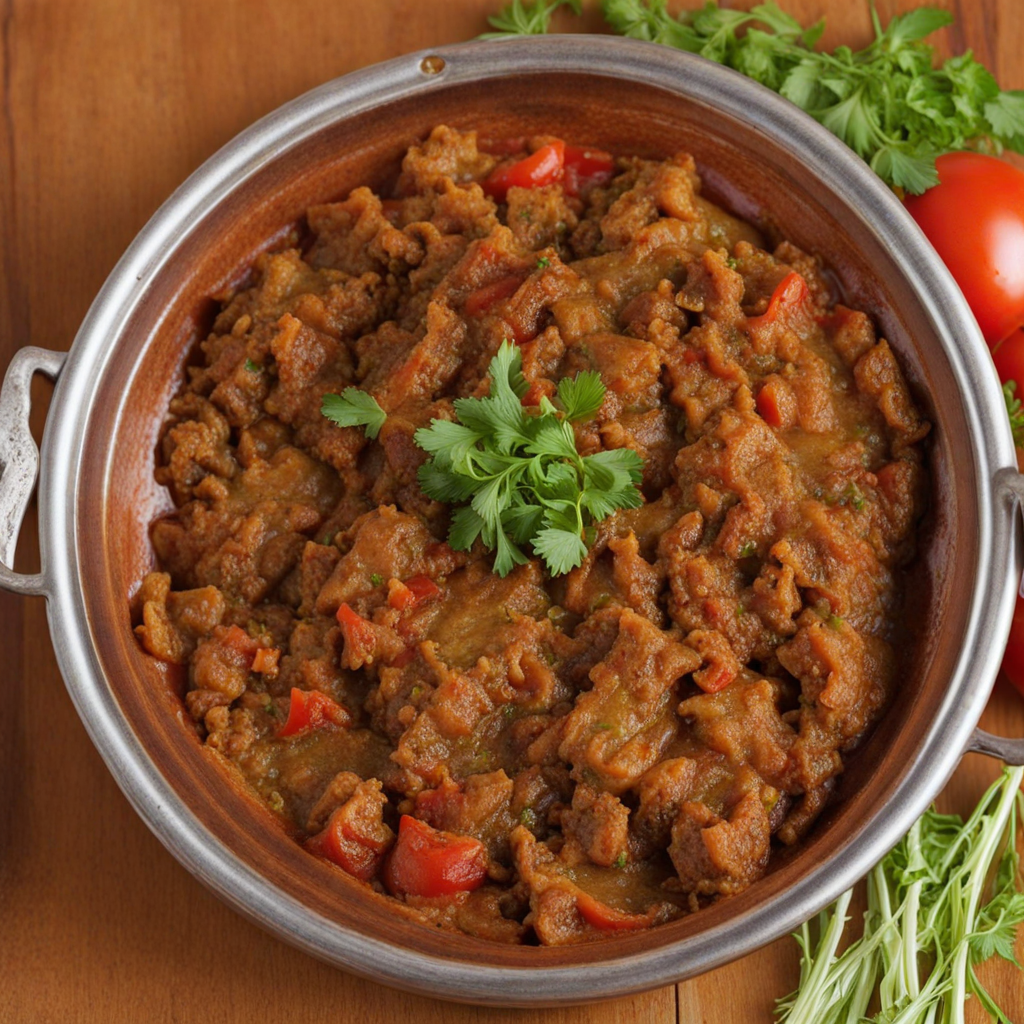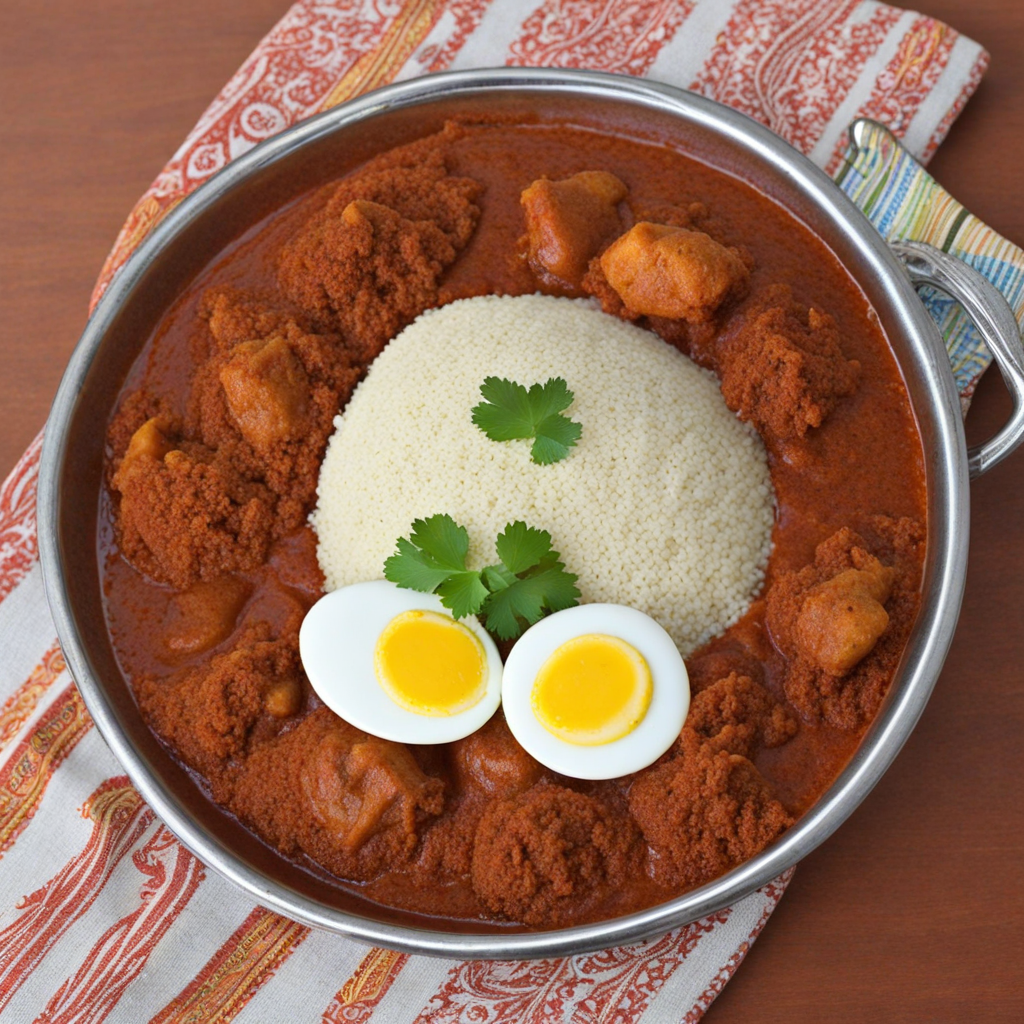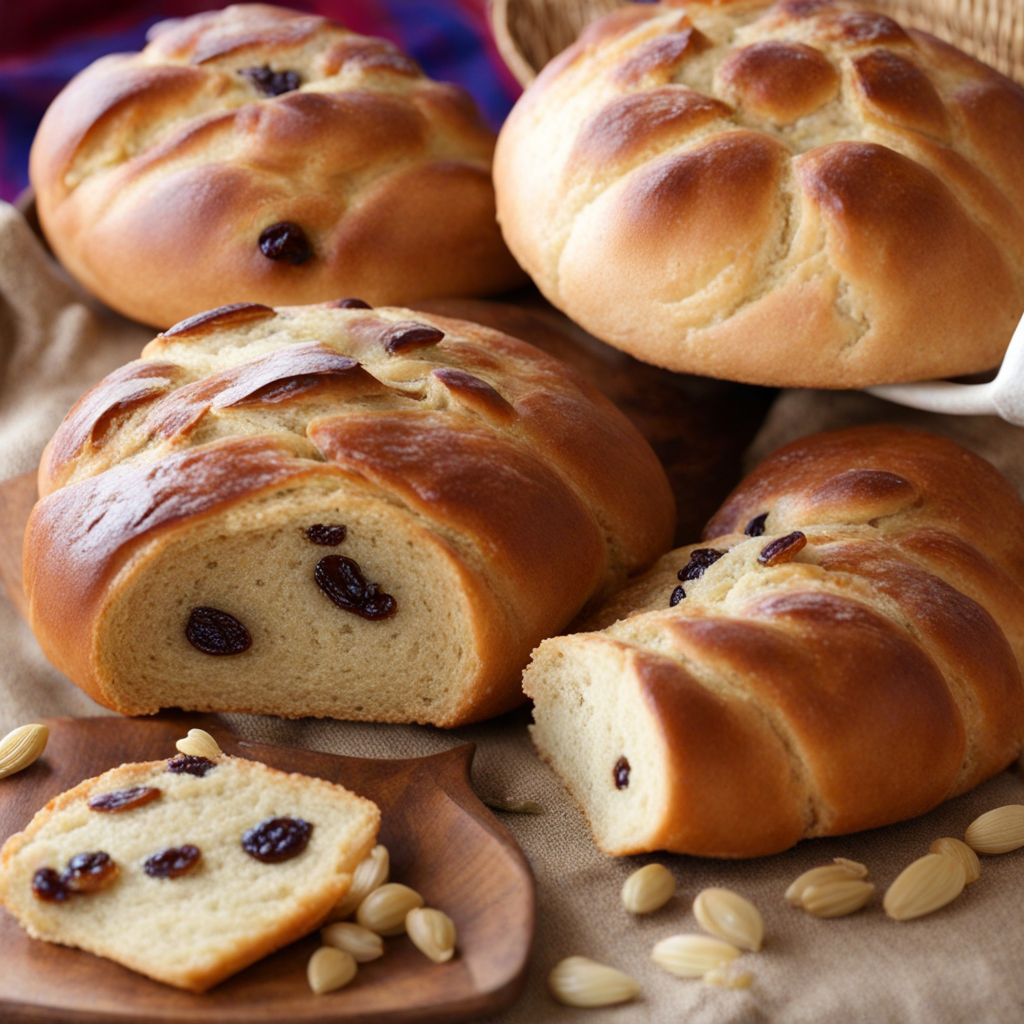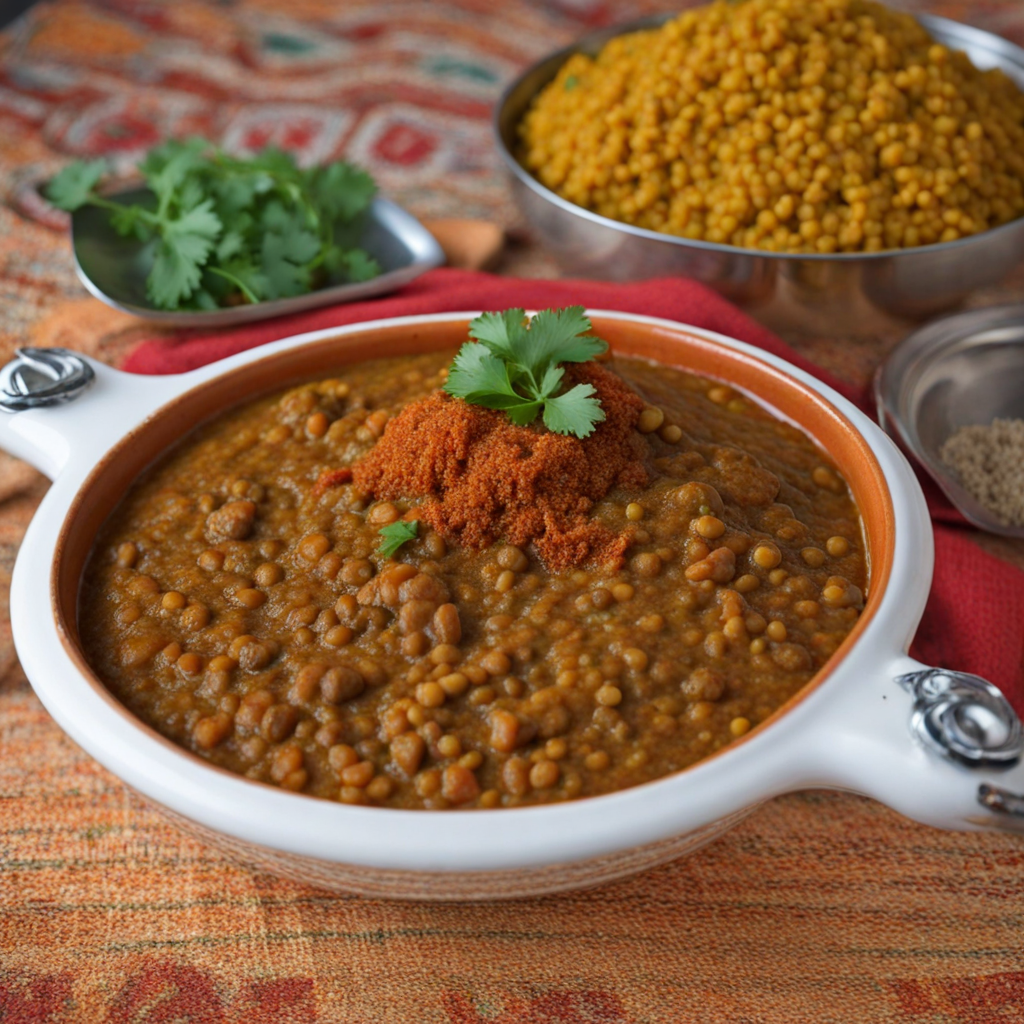Fit-fit
Fit-fit is a traditional Eritrean dish that beautifully marries the robust flavors of spices and the comforting texture of bread. At its core, Fit-fit features torn pieces of injera, a soft and spongy flatbread made from teff flour, which is a staple in Eritrean cuisine. The injera is often mixed with a variety of sautéed vegetables, lentils, and occasionally meat, creating a hearty and satisfying meal. The dish is seasoned with a blend of spices, including berbere, which adds a warm, spicy kick that is characteristic of many East African dishes. The combination of textures and flavors makes Fit-fit a delightful exploration for those looking to expand their culinary horizons.
How It Became This Dish
The Delicious Journey of ፍትፍት: Eritrea’s Culinary Treasure #### Origins of ፍትፍት Eritrea, a country located in the Horn of Africa, boasts a rich tapestry of cultures, languages, and culinary practices that reflect its diverse history and ethnic groups. Among the many traditional dishes that grace Eritrean tables, ፍትፍት (fitfit) stands out as a beloved staple. The origins of fitfit can be traced back to the agrarian lifestyle of the Eritrean people, where the cultivation of grains, such as teff and sorghum, laid the foundation for many traditional dishes. Fitfit is primarily made from injera, a fermented flatbread that serves as a staple food in Eritrea and neighboring Ethiopia. Injera is prepared from teff flour, which has been cultivated in the region for thousands of years. The cooking process involves fermenting the batter, creating a slightly sour flavor and unique texture that pairs beautifully with various stews and sauces. The dish is often associated with communal eating, a cultural practice that emphasizes sharing and togetherness. #### Cultural Significance Fitfit holds a special place in Eritrean culture, embodying not just nourishment but also a sense of identity and community. The dish is often enjoyed during gatherings, celebrations, and various religious holidays, making it a symbol of hospitality and togetherness. Eritreans take pride in their culinary heritage, and fitfit is emblematic of the country’s diverse cultural influences, blending the culinary practices of its various ethnic groups, including the Tigrinya, Tigre, and Saho. The preparation of fitfit is often a collaborative effort, with families and friends coming together to create the dish. This communal aspect reinforces social bonds, allowing people to share stories and experiences while enjoying a meal. Traditionally, fitfit is served with a variety of spicy stews, known as tsebhi, made from vegetables, lentils, or meat, showcasing the vibrant flavors that characterize Eritrean cuisine. #### The Development of Fitfit Over Time As Eritrea's history has evolved, so too has fitfit, adapting to the changing social and political landscapes. The struggle for independence from Ethiopia, which culminated in the early 1990s, has had a profound impact on Eritrean identity, including its culinary traditions. During this tumultuous period, access to ingredients and resources was limited, leading to creativity and innovation in the kitchen. Eritreans learned to make the most of what they had, often relying on locally sourced ingredients to create delicious meals, including fitfit. In recent decades, as Eritrea has established itself as an independent nation, there has been a resurgence of interest in traditional foods, including fitfit. This renaissance has seen a revival of old recipes and cooking methods, as well as the incorporation of modern techniques. Young Eritreans, both at home and in the diaspora, are increasingly embracing their culinary heritage, often experimenting with fitfit by adding new ingredients or flavors to the dish. This evolution has also been influenced by globalization and the increasing availability of diverse ingredients. While traditional fitfit is typically made with injera and a variety of stews, contemporary interpretations may incorporate ingredients from different cuisines, reflecting the melting pot of cultures in today’s world. For instance, some variations may include spicy sauces reminiscent of Indian or Middle Eastern influences, highlighting the interconnectedness of global culinary traditions. #### Variations of Fitfit While the traditional version of fitfit uses injera as its base, the dish has numerous regional variations that reflect local tastes and ingredient availability. In some regions, for instance, instead of using the typical teff injera, fitfit can be made with other types of bread, such as pita or even leftover bread, showcasing the adaptability of this dish. Additionally, the toppings and accompaniments can vary widely. In Eritrea, fitfit is often served with a variety of spicy lentil stews, such as mesir tsebhi (spiced lentils) or shiro (a chickpea stew), which add depth and flavor to the dish. Some may even choose to top their fitfit with fresh vegetables, herbs, or a drizzle of spicy oil, catering to individual preferences and dietary restrictions. #### Fitfit in the Diaspora The Eritrean diaspora, which has grown significantly due to migration and conflict, has played a pivotal role in promoting and preserving the culinary traditions of Eritrea, including fitfit. Eritrean communities around the world have established restaurants and cultural organizations that celebrate their heritage through food. This has not only helped introduce fitfit to new audiences but has also fostered a sense of belonging and community among Eritreans living abroad. In these diaspora communities, fitfit often becomes a bridge between generations, as older family members teach younger ones the traditional methods of preparation, ensuring that the cultural significance and history of the dish are passed down. Eritrean festivals and gatherings frequently feature fitfit as a centerpiece, allowing families to share their culinary heritage with the broader community. #### Conclusion In conclusion, fitfit is more than just a dish; it is a reflection of Eritrea's rich cultural heritage, communal values, and adaptability over time. From its humble origins rooted in agrarian practices to its evolution in the face of social and political changes, fitfit encapsulates the spirit of Eritrea. As it continues to be enjoyed in homes, restaurants, and gatherings both in Eritrea and among the diaspora, fitfit remains a testament to the enduring bond between food and culture, connecting people across generations and geographies. Through each bite, one can taste the history and resilience of a nation, making fitfit not just a meal, but a celebration of Eritrean identity and tradition.
You may like
Discover local flavors from Eritrea


